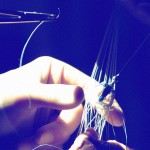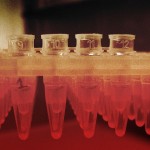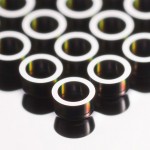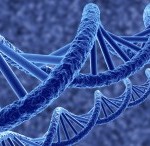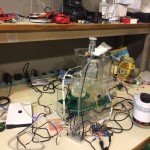the big Apple’s Biotech dreams Are stuck within the Petri Dish
new york has the us of a’s largest biotech brains. but as a hub for biotech, it’s struggling to compete with different hotspots.
February 24, 2015
There’s a hushed quiet within the ready room at a midtown manhattan fertilization sanatorium referred to as Reproductive medical buddies as a dozen girls flip via magazines, the glossies a welcome distraction from their scheduled remedies and consultations. but simply down the hall, in a window-rimmed corner administrative center with views of central Park, conversation ping-pongs back and forth as Piraye Yurttas Beim, a scientist and entrepreneur, updates the sanatorium’s co-director on her startup’s growth.
“What does 20% chance of multiples mean? That’s a very high possibility in comparison with the general population,” Beim says. Her startup, Celmatix, uses a sleek interface to existing data points like that in a kind that women looking to conceive can easily understand. Celmatix’s capability to analyze pregnancy chances is a component of a revolution in personalized medication, delivered to exam rooms by means of cell app, that hopeful inventors and traders are eagerly pursuing.
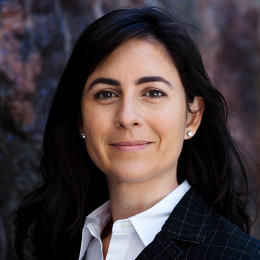
An hour in the past, Beim—who additionally holds a PhD within the genetics of mammalian infertility—used to be on the cellphone with a type of investors; now, she’s tailoring her pitch to Dr. Alan Copperman, who is piloting Celmatix in his SoHo medical institution. “We realized it’s ok to start out placing in our UI [user interface] points of view as a way to give a boost to the physician,” she says.
Dr. Copperman nods vigorously. He and his crew see Celmatix as an improve to the present tools obstetricians use to speak about the possibility that being pregnant will end result from a treatment choice like in vitro fertilization, or IVF. “It’s an entire new way of counseling sufferers,” he says. The meeting ends with promises of introductions, and talk of, probably, the development of an egg calculator. Beim slips out the door and on to her next appointment.
The CEO and mother of two has motive to rush. Having raised $thirteen.5 million in undertaking money in seed and series A rounds considering the fact that she and cofounder Laura Towart Bandak started the corporate in 2009, Beim is racing the clock to commercialize prior to going broke. (in step with Marketdata organizations, the infertility market is rising and will hit $four billion by 2018 because the science improves.) Celmatix boasts a rising team and recognition, but time is cash, especially in NY city. And, like every number of different biotech startups in the city, Celmatix’s capacity to remain right here—with regards to a growing wealth of analysis partners, buyers, and design skill that attracted Beim within the first location—continues to be unsure.
The nation’s bigger biotech hubs, like these in Boston and the Bay space, beckon Celmatix and other promising biotech startups with their well-bred gene swimming pools of skill, real property, and traders. whilst the biotech trade as a complete reaches new highs, that is an ecosystem that New York city—residence base to so many different industries—has struggled to construct.
there’s a deep incongruity here. the city boasts 9 of the u . s . a .’s top medical centers, and the state ranks in the high three for nationwide Institutes of health awards; in a standard yr, NY city captures around 6% of the analysis grant bucks doled out with the aid of the NIH. however less than 2% of the undertaking capital greenbacks invested in U.S. biotechnology and medical device startups go to NY city-based totally startups, in line with a quick firm analysis of trade information tracked through PricewaterhouseCoopers. proper-sizing that share of offers would generate a further $250 to $350 million per 12 months—over $1.5 billion due to the fact 2010.
ultimate may, Eric Gertler, director of the center for financial Transformation at the city’s financial building business enterprise (NYCEDC), summed up the temper among the many metropolis’s buyers and entrepreneurs, telling an target audience at a biotech conference that the big apple is “not living as much as its attainable.”

Disappearing bucks
the fact that Celmatix has lasted goodbye in new york is a new phenomenon. earlier than buyers embraced “digital biotech,” wherein corporations outsource expensive lab work to analyze organizations, the five boroughs were prohibitively expensive to entrepreneurs wanting moist lab actual estate. Many firms were founded here, however few stayed; most teams decamped to the suburbs or biotech hubs in Boston, San Diego, and Silicon Valley. Now all eyes are on a handful of mid-stage startups like Celmatix, which take a seat on the forefront of the wave of biotech startups considering a everlasting big apple deal with.
beneath Mayor Michael Bloomberg, the city successfully nurtured the emergence of startups in its largest legacy industries, like advertising, fashion, and finance. Startups may be small, but the jobs they create are simply the tip of the iceberg; under the skin, chuffed hour locations emerge, dry cleaners open, inside designers win clients.
The stakes are excessive for metropolis leaders like Mayor bill de Blasio, who is now liable for best the way on job introduction and different economic construction. officials, planners, and entrepreneurs have eyed biotech as a possible growth industry for over a decade. And barring an impending bubble, it would be. Amidst a growing number of acquisitions and faster drug approvals by the FDA, the biotech trade is seeing all-time highs. BioCentury, an trade newsletter, reports that an extraordinary a hundred and ten biotech companies went public last year, raising a record $9 billion. in line with PricewaterhouseCoopers and the nationwide undertaking Capital association, challenge capital funding in non-public biotech corporations was up 29% over 2013’s numbers, to $5.97 billion, about the same because the file set in 2007.
“We’ve notion lots in regards to the bioscience house specifically because we predict NY city is in point of fact uniquely put to be a pacesetter on this trade,” Kyle Kimball, president of the NYCEDC, stated at an adventure closing yr. “We in point of fact have a number of the great constructing blocks to be a world chief in bioscience: pharmaceutical corporations, biotech firms, educational science, educational medical facilities, the project capital group.”
however the nation’s present biotech hotspots—in the suburbs of Boston and in Silicon Valley—are bolstered each by means of more capital and via the influence of huge pharmaceutical firms that can lend a hand feed skill into the startup world. In big apple, by contrast, finance and media seize most investors’ attentions, and the nascent biotech scene is still a hodgepodge of smaller efforts, with startups tackling the whole lot from well being care IT to advanced genomics.
Celmatix, on the other hand, sits on the intersection of two trends that would eventually flip the tides in want of the large Apple. On the one hand, investors are more and more open to the virtualization of biotech firms—certainly, many now require a virtual way, so that you could better handle prices and risk. at the related time, metropolis-subsidized efforts to build wet lab area in ny and Brooklyn are at last taking off, providing biotech startups with options closer to house than the administrative center parks of new Jersey, Westchester, and farther afield. In effect, each side of the true property equation—a diminished need for house and the provision of more room—are evolving in choose of the city’s biotech companies.
Beim is cautiously confident that her growing team will be able to stay in the big apple. in the mean time Celmatix operates on a digital variation, with 0.33-birthday party labs completing its genetic sequencing, but the startup may want to build out lab house in order to comply with rules as it transitions out of R&D.
Would that area be in the big apple? “i think it will,” Beim says, however she’s hesitant to commit. “there are many the way to leverage the infrastructure which have come up in the ultimate a couple of years.” Plus, her staff values the cross-disciplinary vitality that infuses the corporate’s headquarters, situated in a coworking house in new york’s Meatpacking District. “we like the thrill of pleasure here, that feeling that everybody is making something from scratch,” she says.
Making area
town’s failure to become america’s biotech epicenter hasn’t been for lack of making an attempt; new york has been doling out furnish bucks and tax breaks for years, with combined outcomes. The de Blasio administration is pursuing plans initiated by means of Mayor Bloomberg for an expansive life sciences campus on Roosevelt Island, in cooperation with Cornell and Israel’s Technion, and officers just lately floated the idea of establishing any other biotech center close to Bellevue health center. In December 2013 the NYCEDC introduced grand plans for a $one hundred million existence sciences fund, but the dollars have but to fully materialize. that very same year the nonprofit gave $626,000 to Columbia professor Sam Sia and Christine Kovich, his wife, to seed the advance of Harlem Biospace, a 2,300-sq.-foot coworking area for early-stage biotech startups on West 127th street that opened final spring.
“We’ve tried to make it totally different than every other lab,” says Matthew Owens, Harlem Biospace’s executive director. the space is postage-stamp tiny, with a shared moist lab on the premises. however with its tall ceilings, chandelier of Edison lightbulbs, and benches upholstered in antique army tents, the situation nods towards a brand new golden age of innovation. Over a dozen startups now name Harlem Biospace dwelling, trying out a variety of ideas, from most cancers treatments to intestine microbial ecosystems, while outsourcing a portion of their experimentation to outside labs.
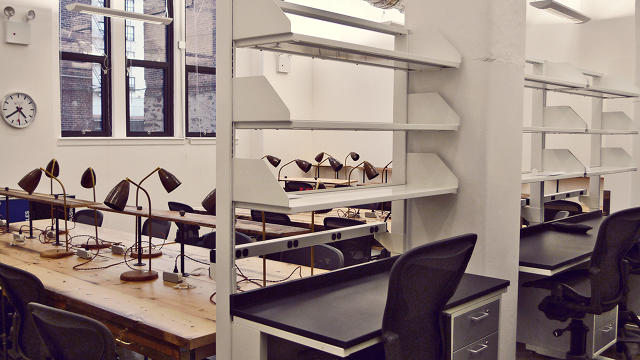
In many ways, Harlem Biospace is a correction to the Alexandria middle, a fancy of marble, glass, and tastefully recycled supplies—complete with city farm—perched near the East River on twenty ninth street. The monumental biotech campus broke floor in 2007, with a hefty tax ruin and aspirations to cater to startups—Beim even took a troublesome-hat tour, as the primary 310,000 sq. feet took shape. but rents at both the first building, which opened in 2010, and the 2nd building, which delivered a further 410,000 square toes when it opened in January, were priced some distance above what early-stage corporations can find the money for.
“we would like the companies to be world-class,” says Joel Marcus, CEO of Alexandria real property, which developed the complicated and has constructed urban clusters of lifestyles-science facilities across the U.S. “We don’t want someone diddling round.”
all over a tour last spring, every surface gleamed, from the white-paneled elevators to the table settings at chef Tom Colicchio’s Riverpark restaurant, tucked off the lobby. The complicated plays house to established names like Pfizer and Roche, and has constructed partnerships with seven hospitals and analysis establishments in the metropolis.
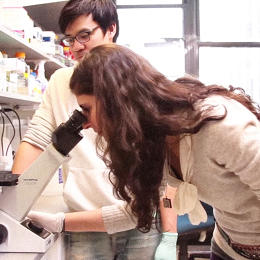
more affordable choices are often emerging: SUNY Downstate is adding new area at the Brooklyn army Terminal, and Harlem Biospace is vying to increase its footprint and set up an uptown biotech corridor. however even with the delivered lab capability, NY city’s biotech neighborhood could be caught in the doldrums if it weren’t for the parallel evolution of virtual fashions, which permit biotech startups to contract out expensive wet lab operations.
“young entrepreneurs are virtually always overwhelmed,” says Tom Cirrito, a startup guide and big apple’s unabashed virtual biotech evangelist. “they have patents to fret about, raising money, hiring.” digital operations are more cost effective, he says.
in response to his work as an early employee at Stemline, a the big apple-based oncology therapeutics firm that started as a digital firm and continues to function as one nowadays, Cirrito is optimistic that digital biotech will at last put the town on equal footing with other industry hubs. at the related time, he recognizes the challenges of creating the edition work. “It’s very administration-intensive as a result of it’s all about relationships,” says Cirrito, an immunology PhD. To motivate loyalty and motivation amongst workers at his contract research organization, one virtual biotech founder based in Cambridge instructed the Wall boulevard Journal that he makes use of Champagne and reward cards.
younger research scientists are more and more all for finding out that administration savvy, entrepreneurial chutzpah, and serendipity—Cirrito met Stemline’s CEO after overhearing him at a Mexican restaurant and identifying to interrupt—however it’s a steep finding out curve. business-subsidized networking situations and university classes have began to lend a hand would-be founders make the transition from doing analysis in a supervised atmosphere to creating offers and calling the shots from afar.
one of those classes is led via doctor-became-investor David Sable, who left his fertility apply for Wall street at age forty three and now teaches a widespread path on biotechnology and entrepreneurship at Columbia college. “I didn’t want to see my college students be able where they were brimming with ideas and entrepreneurial power, yet stifled in their potential to guide the method during which they take these ideas and make one thing tangible,” Sable says. His course, designed to provide students “the vocabulary to perform on the trade aspect,” has greater than doubled in dimension seeing that he started in 2011.
a difficult delivery
Beim, the founding father of Celmatix, launched her company smartly before the true property tendencies now shaping NY city biotech had coalesced. After connecting the dots between her graduate college analysis—making a choice on the genetic pathways likely to sustain a viable being pregnant—and the frustrations of sufferers at fertility clinics, who have been trying to make selections in response to impersonal data about “standard” cases, she bootstrapped the company for over a year. She realized pitch traders and developed a business plan through trial and blunder. As an Ivy League academic who stumbled into existence as a first-time entrepreneur, she found little glamour in it. “At one level I had 10 keys on a keychain, and i would name around and be like, ‘Is your sofa free tonight?’”
at first, Beim stored at it because her self assurance within the science used to be matched by means of the vote of confidence she found in young skilled New Yorkers grappling with the question of when and how one can get pregnant. “We will have to be using genetic trying out to assist information fertility-related selections all over the direction of a girl’s lifetime,” she says. “We had been in our early 30s, dwelling in the metropolis—each dinner party we went to was just a recapitulation of how essential it was once to get this information within the palms of girls.” Later, she experienced the urgency of the Celmatix mission firsthand. “When you wish to have to get pregnant and it doesn’t occur instantly, you assume—am I doing something incorrect? It was once superb to me how incredibly emotional the expertise used to be, even though I understood the metrics.”
And after she and her husband tried for a year, she was once indirectly in a position to conceive spontaneously. “It was once a tricky 12 months full of quite a few u.s.a.and downs,” but one who made her extra committed than ever to getting the design of Celmatix right, and in the palms of ladies. “everyone who needs this information must have it,” she says.
meanwhile, as she sought angel traders, she discovered herself drawn to the West Coast: “Angel investment is a bit more of a passion available in the market. They’re on their fifth or sixth generation of a hit exits. Entrepreneurs who wanted to lend a hand the next generation simply weren’t here. That was once a struggle,” she says.
however Beim—a transplant from Texas who used to be born in Turkey—knew she needed to be in ny. She references one thing she’d heard Gilt’s Kevin Ryan say: “If big apple is dominant in an offline business, that you can be sure that it’s poised to be dominant in a web-based, tech-driven model of that.” new york, she notes, has the perfect collection of fertility clinics. “So the medical doctors are right here, the sufferers are right here, my community was once right here, the biosciences initiative was once right here, I’d performed my graduate work here. All those issues aligned, and i really like the big apple.” When it came time to % her bags and go away behind Cambridge university, where she had been doing embryology research, she booked a ticket to new york.
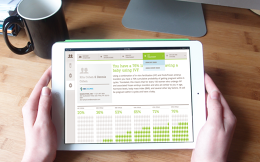
fast-ahead to 2015, and fertility clinics around the us of a are testing Polaris, her company’s analytics instrument, which marries visual design and a proprietary database of fertility-associated DNA areas to lend a hand docs and patients talk about remedy options. The “bio” component of the product—private genetic information equipped by way of a person affected person—will layer onto Polaris subsequent 12 months.
“in some way the delivery of the genetic knowledge goes to be a lot more highly effective now that we’ve this nice software interface and platform to tie it to,” she says.
a complete Ecosystem
Early indications recommend that the tides are slowly turning for the big apple’s newest startup scene, with the city’s share of U.S. mission capital for biotechnology and scientific units rising from zero.8% in 2010 to 2.3% in 2013. In conception, all the essential elements for a vibrant startup ecosystem are now in the combine: ability, cash, mentorship, an entrepreneurial tradition, a sense of community, real estate. Networking situations and satisfied hours abound, and there is even an early-stage incubator devoted to NY city biotech entrepreneurs.
however quarter via quarter, the development lines remain erratic, with major offers—just like the $27 million that diagnostics startup Exosome Diagnostics raised last year—throwing off the averages.
“The constructing blocks are in position, and there’s extra of an effort to convey the whole lot together,” says Dennis Purcell, senior managing director at Aisling Capital, a well being-focused mission agency based totally in new york. “What we’d like is a unified vision of biotech in the big apple.”
in the trenches, entrepreneurs are seeking to benefit from the city’s rising assets. “there is sufficient of a community here that you can meet people, you could fundraise, that you may look for medical trial consultants, you’ll find patent attorneys who deal with early-stage firms,” says Kate Rochlin, chief scientific officer at the hypersensitive reaction-targeted startup Immunovent, one in all Cirrito’s advisees and a Harlem Biospace member. Pushing at the boundaries of new York biotech has its challenges, however in a city with any such range of industries and disciplines, it also has its ingenious freedoms.
“there is no version for a way you need to do it,” she says. “it’s bettering and it’s doing it in its own means, and that i actually like that.”
fast company , learn Full Story
(140)



